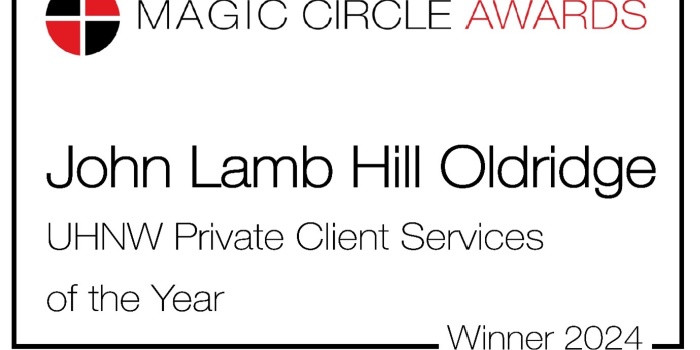Business Relief as an offset for inheritance tax: Here is how it might work

At the end of their lives, your clients are likely to want to bestow a significant amount of their wealth and assets to their family. If they have accrued a sizeable estate, their beneficiaries might be hit with a hefty inheritance tax (IHT) bill after they have died.
FTAdviser reports that the 2023/24 tax year has seen HMRC receive £2.6 billion in the year to July 2023 with IHT receipts expected to hit £7.2 billion this financial year.
Meanwhile, This is Money reports that an increasing number of families are facing fines for breaking IHT rules. According to the report, only the wealthiest 4% of families pay IHT, so these fines are affecting mostly high net worth (HNW) and ultra HNW (UHNW) families.
There are several options available to mitigate a looming IHT bill. One option that has been growing in popularity in recent years is the use of Business Relief to offset any potential IHT liability.
Here’s how it could help to reduce your clients’ IHT liability so that more of their wealth can be passed to their beneficiaries.
IHT could see your clients’ estates taxed at 40% and the risk is greater for wealthier families
One of the reasons more families are finding themselves with an IHT liability is frozen IHT thresholds.
The IHT nil-rate band has been frozen at £325,000 since 2009 and the freeze has now been extended to April 2028. The threshold increases to £500,000 if your clients leave their home to children or grandchildren – known as “the residence nil-rate band” – more about this below.
If your clients are married or in a civil partnership, they could effectively double the amount they can leave to beneficiaries before being liable for IHT to £650,000 (or £1,000,000 with property included). Otherwise, anything above the threshold is typically liable for IHT at the 40% rate.
There’s normally no IHT to pay if:
- The value of your clients’ estate is below the £325,000 nil-rate band
- They leave everything above the £325,000 threshold to their spouse, civil partner, or charity.
Things can be complicated further for HNW or UHNW individuals, because the residence nil-rate band will reduce by £1 for every £2 that the estate is worth above the £2 million taper threshold.
This means that homes with significant value can very quickly tip the value of an estate over the IHT threshold.
If your clients are concerned that the significant value attached to their estates might see their beneficiaries facing a sizeable IHT liability, business relief could be a useful solution.
Business Relief could be used to offset IHT liability in estate planning
Business Relief was first introduced in the 1976 Finance Act. It was designed to enable family-owned businesses to continue trading after the death of an owner by protecting the business from having to be sold to cover the cost of IHT liabilities.
Over time, Business Relief has evolved to include a wide range of investments.
It is important for your clients to remember that not every investment will qualify for Business Relief. Those that could qualify include:
- Shares (including minority holdings) in an unquoted qualifying company
- Shares in a qualifying company listed on the Alternative Investment Market (AIM)
- An unincorporated qualifying trading business, including partnerships.
Additionally, it is possible to hold AIM-listed shares within a Stocks and Shares ISA, so your clients could benefit from a tax-efficient ISA wrapper as well as any Business Relief on qualifying shares.
Business Relief shields some or all of the value of a business or its assets from being included in the calculations determining how much IHT is payable.
Your clients could receive 100% Business Relief on:
- A business or interest in a business
- Shares in an unlisted company.
They could also get 50% Business Relief on:
- Shares controlling more than 50% of the voting rights in a listed company
- Land, buildings or machinery owned by the deceased and used in a business they were a partner in or controlled
- Land, buildings or machinery used in the business and held in a trust that it has the right to benefit from.
Using Business Relief should be planned well in advance. This is because your clients’ beneficiaries can only receive relief if your client owned the business or asset for at least two years before they died.
If your clients have significant business interests, the offset to any potential IHT liability provided by Business Relief could be invaluable.
Scenarios where Business Relief may come in useful for IHT planning
Using Business Relief to reduce the size of a client’s taxable estate to reclaim their residence nil-rate band
One scenario could be that your client has enough of their assets in Business Relief that it can reduce their taxable estate to the point where the residential nil-rate band becomes available again.
If they placed assets into Business Relief-qualifying businesses, individuals could leverage the Business Relief rules to ensure that their estate size falls within the residence nil-rate band threshold and so can provide up to an additional £70,000 in IHT saving per residence nil-rate band available.
Not only do they receive IHT relief on their Business Relief assets, but it also can potentially reduce their IHT bill on their wider estate.
Settling Business Relief assets into discretionary trusts
Transferring assets into a discretionary trust can be a highly effective strategy to reduce your client’s IHT liability. Notably, the key advantage of assets with Business Relief being placed into a discretionary trust is that they can be gifted without triggering an immediate tax charge.
Typically, if you transfer assets directly into a discretionary trust, it is liable to a 20% entry charge and potentially another 20% tax charge if your client passes away within seven years. However, assets with Business Relief are not liable to either the entry charge or the additional 20% charge if your client dies within seven years.
This strategy offers both wealth protection and control over distribution, allowing clients to allocate assets among family members and providing flexibility in when and how they receive them. It can significantly reduce their IHT bill, provided you adhere to the Business Relief rules and the specific conditions of the discretionary trust.
For clients who have an LPA
For a client with a Lasting Power of Attorney (LPA) in place, the ability to use Business Relief assets effectively to reduce their IHT liability can be a valuable estate planning strategy, especially when they are unable to gift assets away directly. Business Relief assets can be a powerful solution in such situations.
Since the LPA grants the appointed person control over financial decisions, they can strategically invest in Business Relief assets on behalf of the client and reduce their overall taxable estate. This is particularly beneficial if the client’s assets exceed the IHT threshold.
When the client passes away, the Business Relief-qualifying assets held within their estate become exempt from IHT, which ultimately reduces the IHT bill that their beneficiaries will face.
Your clients might want to seek out expert advice before claiming Business Relief
Typically, Business Relief can be claimed during the estate valuation process by the executor of the will or administrator of the estate. At this juncture, your clients’ beneficiaries might be able to claim Business Relief.
This usually involves completing:
- Form IHT400 (inheritance tax account)
- Schedule IHT413 (business or partnership interests and assets).
Claiming Business Relief can be a complex process, and it’s important that your clients and their beneficiaries take every care so that they don’t fall foul of IHT. Seeking out expert advice could help them navigate the process.
At John Lamb Hill Oldridge, we have a lot of experience in supporting clients through claiming Business Relief. As our director, Paula Steele, recently said in IFA Magazine: “We are very comfortable advising on Business Relief, not only in terms of “product” available but also relievable assets within clients’ overall asset positions and in the use of Balfour arrangements.
“We have seen a significant increase in client interest, and also their advisers.”
Get in touch
If your clients have any lingering worries about their estate and potential IHT issues, it is important that they start the conversation now and properly assess potential avenues for savings or tax relief.
They can reach out to us by email at [email protected] or by calling us on 020 7633 2222.
Please note
This article is no substitute for financial advice and should not be treated as such. To determine the best course of action for your individual circumstances, please contact us.
Other Insights
John Lamb Hill Oldridge launches dedicated insurance-based investment products advice team
In recent months, many high-net-worth (HNW) individuals and families will have found themselves affected by changes to the Capital Gains Tax (CGT) rules and proposed reforms of the “non-dom” regime. To help advisers and their [...]
Holly Hill promoted to associate director
The UK’s foremost specialist protection adviser, John Lamb Hill Oldridge, has boosted its leadership team by promoting Holly Hill to the role of associate director. A former Team GB rower, Holly joined John Lamb Hill [...]
John Lamb Hill Oldridge wins gold at the Citywealth Magic Circle awards
Here at John Lamb Hill Oldridge, we are dedicated to providing the highest quality service to all of our clients. It is our mission to help them feel reassured about the future by arranging the [...]



